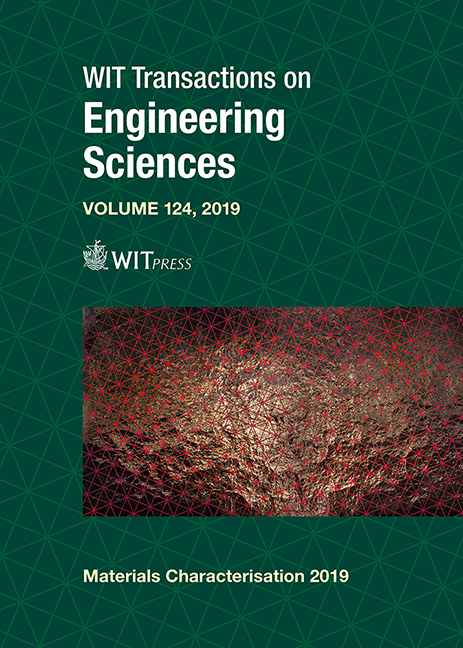EFFECT OF CURRENT MODE ON THE PLASMA DISCHARGE, MICROSTRUCTURE AND CORROSION RESISTANCE OF OXIDE COATINGS PRODUCED ON 1100 ALUMINUM ALLOY BY PLASMA ELECTROLYTIC OXIDATION
Price
Free (open access)
Transaction
Volume
124
Pages
14
Page Range
3 - 16
Published
2019
Size
553 kb
Paper DOI
10.2495/MC190011
Copyright
WIT Press
Author(s)
RIYAD O. HUSSEIN, XUEYUAN NIE, DEREK O. NORTHWOOD
Abstract
Oxide coatings were produced on an 1100 aluminum alloy using a plasma electrolytic oxidation (PEO) process in an alkali-silicate electrolyte. Three different current modes were investigated, namely DC, unipolar and bipolar. Optical emission spectroscopy (OES) was used to characterize the plasma in terms of the plasma electron concentration and temperature. SEM and EDS were used to characterize the surface morphology and the cross-sectional structure of the coatings. Potentiodynamic polarization corrosion testing was performed in 3.5 wt% NaCl solution for both uncoated and coated samples. Plasma electron temperatures were in the range of 4,500 K to 10,000 K. The plasma characteristics, including sparking, have been related to the surface morphology of the coating. The coating morphology, microstructure and corrosion resistance varied with current mode. A bipolar current mode produced a higher quality (surface morphology, compactness and corrosion resistance) coating than either a DC or unipolar mode.
Keywords
PEO coatings, process parameters, plasma characteristics, soft sparking, coating quality, corrosion





